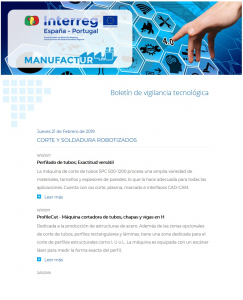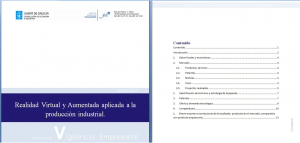Technological Surveillance is defined according to the UNE 166000:2006 Standard as an “organized, selective and systematic process, to capture information from abroad and from the organization itself on science and technology, select it, analyse it, disseminate it and communicate it, to convert it into knowledge with in order to make decisions with less risk and to be able to anticipate changes”.
To date, the term Technological Surveillance has been widely adopted to refer to the services that provide or give access to strategic information within an organization and that encompass all areas of interest to it:
Surveillance of the Environment: Identification, assessment and use of information on legislation, environmental and socio-cultural aspects.
Commercial Surveillance: Identification, assessment and anticipation of consumer needs, lifestyle and socio-cultural demand trends.
Competitive Surveillance: Evaluation of competitors and identification and valuation of products and services under development or available in the market.
Technology Watch: Identification and evaluation of emerging technologies, opportunities and threats.
The CIS Technology and Design has extensive experience and knowledge in the provision of Technological Surveillance (VT) and Competitive Intelligence (IC) services that it offers since 1999 to all types of organizations and companies through advice or the timely preparation of reports or other documentary products.
Electronic bulletins: sending by mail with headlines of interest to the user, attending to a previous diagnosis: business news, technologies, legislation, regulations, aid, markets. Weekly or biweekly dispatch frequency.
VT reports: they are documents that reflect the state of the art of a technology or product at the time of its elaboration or from a period of time decided in advance.
Specific requests for information: These allow users to request specific data that they need at certain times, such as lists of suppliers, location of companies or references thereof.
Through these Strategic Information services, we contribute to solving part of the limitations that companies present in accessing necessary and useful information for their activity and management environment.
Another of the actions within the VT Unit is the organization of dissemination and training actions, responding to our interest in being prescribers, especially among the business fabric, of the importance of technological, scientific and environmental information, as well as the application in business management, trying to bring and show a practical vision of VT. Through these events we help companies to take the necessary steps for the design and implementation of a VT service in their organizations.





